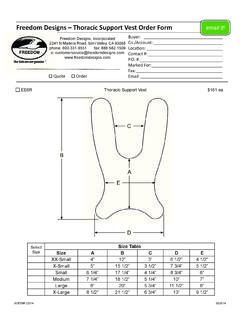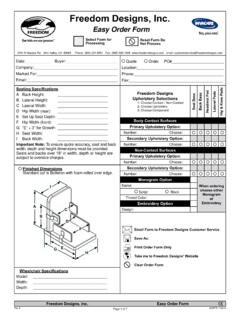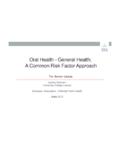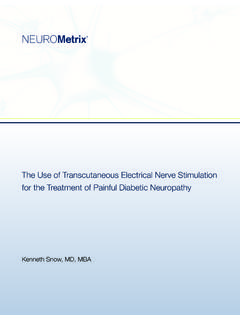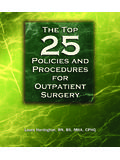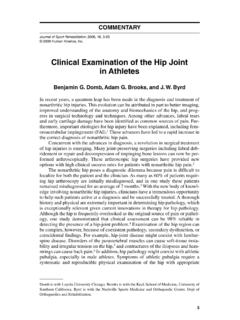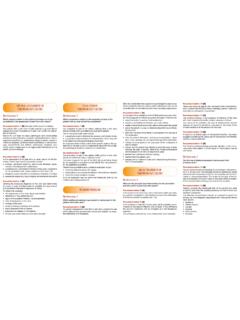Transcription of Positioning for Hip Health: A Clinical Resource
1 Introduction The development of hip displacement and dislocation in children with cerebral palsy (CP) is well documented in the literature [1, 2]. The progression is from a normal hip at birth to a displaced hip as early as 2-3 years [3]. Hip displacement/dislocation and its resulting pain can have a huge negative impact on care-giving, participation, activity, sitting ability and sleep [4, 5]. Management of hip displacement/dislocation primarily involves medication and surgery. Clinically, Positioning in lying, sitting, standing and walking is used pre and post hip surgery to address many goals such as participation in activities, self care, sleeping and comfort. The role of Positioning for prevention and management of hip displacement and/or dislocation is emerging.
2 The objective of this poster is to illustrate a Clinical Resource tool that integrates GMFCS levels, ages from infancy to skeletal maturity and Positioning interventions. The Resource is based on research evidence and expert opinion. What is the Clinical Implication of the Research? Acknowledgements: Our sincere thanks to the leadership at Sunny Hill: Janice Duivestein, Lori Roxborough, Dave Cooper and Catherine Ellens. Thanks to Michelle Cormack for creating the graphics. Lastly to the amazing team members on the Positioning and mobility team-a big thanks to you all. We identified the following key components to consider when Positioning a child with CP GMFCS levels III-V to have a positive impact on hip health : early intervention dosage hip abduction, hip external rotation, and; Each components should be considered in lying, sitting, standing and walking.
3 We integrated the research and our expert opinion to develop a Clinical tool. The purpose of this tool is to guide clinicians regarding equipment provision for children GMFCS III-V to give them the best hope for prevention of the painful displaced or dislocated hip. Further research is also needed in this area to clarify the efficacy of Positioning for hip health . Poster References , A. W., & Robb, J. E. (2006). The hip in cerebral palsy. Current Orthopaedics, 20, 286-293. , D. A., & Flynn, J. M. (2006). Evaluation and treatment of hip dysplasia in cerebral palsy. Orthopedic Clinics of North America, 37, 185-196. , G., Lauge-Pedersen, H., & Wagner, P. (2007). Characteristics of children with hip displacement in cerebral palsy.
4 BMC Musculoskeletal Disorders, 8(101). , B. C., Elder, D. E., & Taylor, B. J. (2012). Interventions with a sleep outcome for children with cerebral palsy or a post-traumatic brain injury: A systematic review. Sleep Medicine Reviews, 16, 561-573. , F. M., Chirwa, T. F. (2011). Daily care activities and hip pain in non-ambulatory children and young adults with cerebral palsy. Journal of Pediatric Rehabilitation Medicine: An Interdisciplinary Approach, 4, 219-223. 6. Traffic lighting concept adapted from: Novak, I. (September 29, 2010). Closing the Research- Practice Gap: Responsibilities and Solutions. Evidence Based Practice Workshop. Lecture conducted from Sunny Hill health Centre, Vancouver.
5 health Centre for Children Positioning for Hip health : A Clinical Resource Lynore McLean, PT, Sonja Magnuson, Rehab. Sc., Sherylin Gasior, OT Sunny Hill health Centre for Children, Vancouver, BC, Canada As a Clinical team we reviewed the evidence of Positioning as a treatment approach for the prevention of hip displacement and/or dislocation. Our research question was: Among children with CP does Positioning affect the hip development? The research evidence is insufficient to demonstrate a strong causation between Positioning and hip development. This is due to the relatively low numbers of studies, the mostly moderate and weak quality of the studies and the low level of the study designs.
6 The traffic light code and state of the evidence classification is yellow [6]. Research Evidence The information to be gleaned from the research evidence includes the trends and the Clinical and/or non statistical effects, both positive and negative. The following trends became apparent: 1. Many of the studies had a positive Clinical result from the Positioning intervention, including a positive result with the migration percentage; however many are not statistically significant. are using hip migration as an outcome measure. It is a valid and reliable outcome measure, indicative of hip location. are frequently Positioning the hips in abduction; between 15-30 or as tolerated by the child.
7 Dosage or time spent in Positioning device(s) has an effect. Positioning is more likely to have positive Clinical results when more time is spent using Positioning equipment with an abducted hip position. These trends informed our Clinical discussion and development of a Clinical Resource . What is our Expert Opinion? The traffic light designation of yellow is symbolic, indicating insufficient evidence and an ongoing need to measure outcomes.

